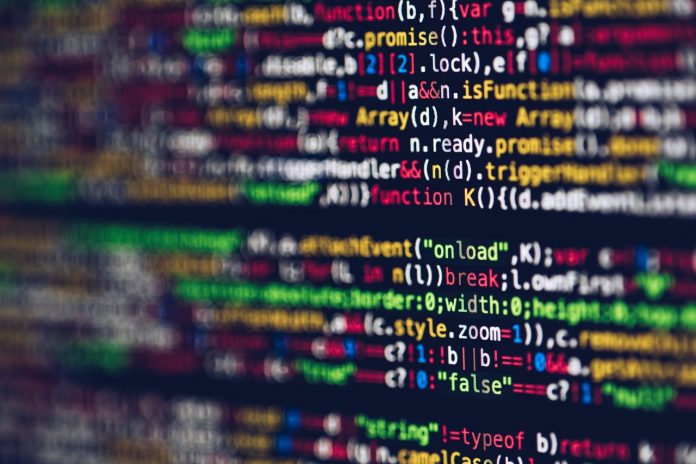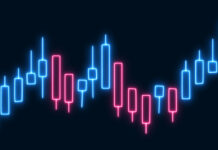
Many people imagine a scene out of ‘The Wolf of Wall Street’ when thinking about trading and finance. They envision a bustling room filled with shouting, frantic energy, and stress as traders rush to make their moves.
However, a world where computerized technology continues to improve means the vast majority of trades executed today are automated by algorithms. The financial industry relies on algorithmic trading to reduce potential order costs, mitigate the risks for human error, and boost the chances of profiting by rapidly adjusting trade strategy based on news or market condition.
Currently, about 70-80% of overall trade volume across developed markets (like the United States) is generated through algorithms. The number dips to about 40% in emerging economies like India.
While many traders welcome relying on algorithms to execute transactions, different financial entities do take varying perspectives on the benefits and risks of algorithmic trading.
Keep reading for an overview of the industry and its pros and cons.
What is algorithmic trading and how does it work?
With algorithmic trading, a computer program follows a pre-set list of instructions to place trades. Instructions hinge on the price, quantity, and timing of the trade to eliminate potential pitfalls of human emotions playing a role in financial transactions. The algorithms will also search markets for potential trade setups before executing them in line with instructions.
Algorithms for trading are backtested with years of historical price action before they are deployed to execute real life trades. This process ensures the trade strategy is sound and exposes any areas of improvement. Many financial entities also forward test trading algorithms to see how the program works with real-time, current market data.
There are a few strategies traders operating with algorithms utilize to get the results they want. For example, a large sovereign wealth fund with tens of millions will often use algorithms to break up buy orders by strategically placing them over a period of time to be executed. This process usually helps get a slightly better entry price on a stock or ETF.
Traders also take advantage of algorithms to capitalize on arbitrage opportunities, especially across different nations. Scalpers often rely on algorithms to find small price gaps and then execute trades in an attempt to profit. Systemic traders who follow trends often find algorithms a useful tool when it comes to trading pairs of correlated instruments or to match a long position with a short position in pairs trading.
In general, algorithms are most often used in high-frequency trade scenarios despite the array of investment opportunities and trade potential out there.
On occasion, algorithms are used to try and ascertain other algorithms executing large orders. These ‘sniffing algorithms’ are used by traders to find large order opportunities to be filled at a higher price.
Overall, those interested in implementing an algorithm need a few components. They need to buy pre-built trade software or have the expertise needed to program and deploy the algorithm. They also need to have trade platform access and network connectivity to place orders, along with market data for the algorithm to rely on.
Finally, prospective algorithm traders need to maintain the right infrastructure to support the program as it runs and operates.
What are the advantages of algorithmic trading
Algorithmic trading continues to rise in popularity for several reasons.
Their fully automated nature means trading becomes systematic, objective, rule-based, and free of human emotion that can lead a trader into making bad decisions. Human traders can also make simple mistakes like inputting an overly large position size or even mistyping a stock symbol. Pre-programmed algorithms eliminate these errors.
Algorithmic trading is settled extremely quickly as the program can analyse a range of technical parameters in milliseconds before executing a trade. Speed is everything in the financial world, especially for day traders or in markets with a high degree of volatility. Jumping in on a trade just a few seconds behind can dramatically reduce potential profit.
Trades with algorithms also positively influence the wider economic market. Trading algorithms help entities with portfolio diversification since they can be set up to run concurrently across different markets, with different strategies and focuses. This trade breadth would be impossible if a human trader was trying to work on their own.
Additionally, algorithmic trading fosters market liquidity since large share volumes can be purchased and sold in just a few seconds. Better volume leads to stronger liquidity – boosting market conditions for everyone involved.
What are the risks involved in algorithmic trading
The biggest risk with algorithmic trading is the fallout from a simple error. Since algorithms can buy and sell across hundreds, or even thousands of transactions in seconds, making a mistake with the program can lead to immense losses. Sometimes algorithms can react to strange market conditions and make a decision that leads to a flash crash.
With a flash crash, a dramatic price decline is realized in a short amount of time. In October 2016, the British Pound fell 6% against the U.S. Dollar in a couple of minutes, due to a flash crash some believe occured after algorithms made decisions to sell. In May 2010, a Dow flash crash led to millions being lost.
Large amounts of algorithms operating can also make it difficult for certain investors to enter the market, especially if the trading leads to high market volatility.
If the market is crashing in a major way, there might not be any liquidity available for trades to be executed. This scenario occurred with the Swiss National Bank removing a CHF peg, eventually leading some major brokerages to go bankrupt.
Conclusion
Automated trading only continues to grow as the financial world becomes more technical and computerized.
Relying on algorithms has several advantages, centralizing on their congruent and static nature that eliminates the pitfalls of human emotions with trading. However, making errors when setting up an algorithm can have disastrous consequences and lead to massive market impact.
Entities interested in algorithmic trading often invest in data science and design thinking experts to help structure programs in a way that get desired solutions.
[newsletter_form lists="1"]










